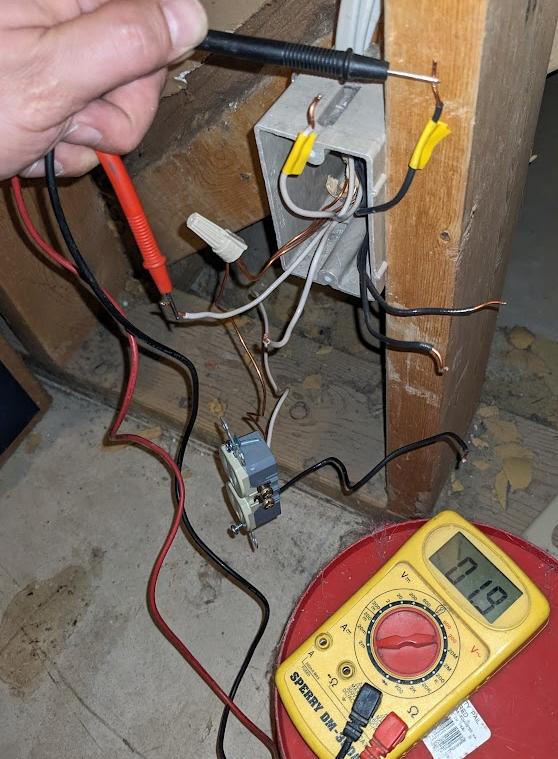From your detailed description, it sounds as though one of the downstream outlets outside the house has a fault between neutral and ground. Follow the white wire which was reading 101.8, and that should get you closer to where the fault is. It might be anything such as: the receptacle got wet, a nail went through the NM-B cable, or something of that nature.
Separately, the white wire that reads 0.7 is fairly normal for a wire segment that should be dead. So no cause for alarm there.
Now to explain how I reached these conclusions. Firstly, a GFCI operates by detecting any difference in current between the live and neutral wire, downstream of the GFCI. If this difference exceeds ~6 mA, then the GFCI will trip.
Secondly, North American grounding systems will bond the ground rod and the neutral wire at only one point, at the service entrance where the main disconnect switch is located. Nowhere else should ground and neutral be bonded except here. In the IEC nomenclature, this is called a TN-C grounding system.
Thirdly, if a circuit has daisy-chained outlets, then any current drawn by upstream outlets will induce a small voltage onto the neutral wire, detectable at downstream outlets, compared to the ground wire and ground rod.
Let me explain a bit clearer: suppose a circuit has outlets A, B, and C, where C is the farthest from the breaker box. Plugging in a space heater into outlet A will cause current to flow to the space heater and back to the breaker. Because current is flowing on both the live and neutral wires, and because house wiring has a small, non-zero resistance, Ohm's law dictates that there must be a voltage difference across the wire, however small. That is, if the breaker box would measure the live wire at 120.0v and the neutral wire at 0.0v, then the voltage at outlet A might measure 119.4v and 0.6v, respectively, when the space heater is powered.
Because outlets A, B, and C are in parallel, we would also see this hypothetical 0.6v at outlets B and C as well, measuring between neutral and ground. This is normally not a problem.... except if outlet B is a GFCI and outlet C has a neutral-to-ground fault.
In this new scenario, the voltage induced on the neutral by outlet A will cause current to flow through outlet C's neutral-to-ground fault. After all, that 0.6v would prefer to flow to the ground wire, which remained at 0.0v (since the ground wire didn't have current until now).
The amount of current through the fault could be sizable, and almost certainly above 6 mA. This current flows through outlet B's neutral but not its live wire. Accordingly, the outlet B GFCI detects the difference and trips off.
This situation is only possible precisely when: a) there is current on the neutral wire somewhere, and b) there is a neutral-to-ground fault. The fault may be new, or perhaps you haven't used this circuit in a while.
In any case, the course of action is to identify which of the downstream 14 gauge cables leads to the fault. Since you measured 101.8 v through one cable's neutral, that is probably the direction of the fault, since the fault means you're measuring from live to ground, which should be somewhere in the ballpark of 120v.
The usual course of action to diagnose GFCI issues is to slowly reattach downsteam circuits until the GFCI starts tripping again. That gets you closer to the true issue that's causing the GFCI to trip.
Good luck and stay safe!


 The 01.9 will reduce to 0.7 if I hold it there a while.
The 01.9 will reduce to 0.7 if I hold it there a while.